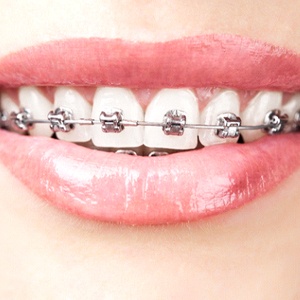Picking the Best Cumming Orthodontics for Effective Braces and Aligners Solutions
Wiki Article
Comprehensive Overview to Orthodontics Treatments for Fixing Dental Imbalances
Recognizing the complexities of each procedure, including their systems, benefits, and possible disadvantages, is crucial in making educated decisions about one's orthodontic therapy. As we navigate through the detailed overview to orthodontic treatments for dealing with oral misalignments, the elaborate details of each method will unravel, dropping light on the course toward a practical and unified oral positioning.Orthodontic Procedures Overview

Along with clear aligners and conventional dental braces, orthodontists might additionally suggest various other treatments like headwear, palatal expanders, or retainers to address specific alignment concerns (orthodontics). These treatments are customized to each person's unique needs and might involve a mix of therapies to achieve the desired results. Routine changes and monitoring are essential parts of orthodontic therapy to ensure progression gets on track and to make any needed modifications along the means. By undergoing orthodontic treatments, clients can not only achieve a straighter smile but likewise improve their overall oral health and feature.
Traditional Braces: How They Function
When considering orthodontic therapies for dental imbalances, traditional braces stand out as a tried and true technique for remedying teeth placing. Conventional braces are composed of braces, cords, and bands that work with each other to apply constant stress on the teeth, gradually moving them into the desired alignment.
One trick aspect of just how standard braces job is the process of bone remodeling. As stress is related to the teeth with the dental braces, the bone bordering the teeth is improved to sustain the brand-new tooth placements. This improvement is vital for the long-lasting security of the fixed placement. Patients will require normal adjustments at the orthodontist's workplace to make sure the dental braces continue to apply the appropriate stress for efficient teeth movement.
Unnoticeable Aligners: Benefits And Drawbacks
Undetectable aligners offer a discreet and practical choice to typical dental braces for remedying dental imbalances. These clear, tailor-made trays are practically unnoticeable when used, making them an attractive option for people looking for a much more cosmetically pleasing orthodontic therapy. One of the main benefits of undetectable aligners is their removability, allowing for simpler maintenance of dental hygiene contrasted to conventional dental braces. Individuals can eliminate the aligners prior to eating or brushing their teeth, lowering the danger of food obtaining embeded the device and streamlining the cleaning procedure.
Surgical Orthodontic Options
Surgical interventions in orthodontics existing feasible options for attending to intricate oral misalignments that might not be properly dealt with with conventional orthodontic treatments. While undetectable aligners and typical braces can correct lots of orthodontic concerns, particular cases require surgical treatment to attain optimum outcomes. Surgical orthodontic choices are usually advised for severe malocclusions, significant jaw inconsistencies, and cases where the underlying bone framework needs modification to attain appropriate alignment.One usual surgical orthodontic procedure is orthognathic surgical procedure, which includes repositioning the jaws to fix functional problems such as problem talking or eating. This surgical procedure is usually performed in partnership with an orthodontist who aids align the teeth prior to and after the treatment. Surgical orthodontics might likewise entail treatments to expose influenced teeth, remove excess gum tissue, or reshape the jawbone to produce a much more harmonious face account.
Prior to considering surgical orthodontic alternatives, people undergo an extensive assessment to identify the necessity and possible benefits of such treatments. invisalign. While surgery might appear complicated, it can significantly enhance both the function and aesthetics of the smile in situations where conventional orthodontic treatments fail
Retainers and Post-Treatment Treatment

Failure to comply with post-treatment care guidelines can result in relapse, where the teeth gradually relocate back towards their initial placements. Constant retainer wear, excellent dental hygiene, and normal dental exams are essential for keeping the results accomplished through orthodontic surgical treatment and ensuring the long-term stability of the corrected oral placement.
Final Thought
In verdict, orthodontic procedures use various alternatives for dealing with oral imbalances. Surgical orthodontic choices are offered for extra extreme imbalances. Generally, orthodontic treatments can efficiently boost oral health and aesthetic appearance.As we browse through the detailed guide to orthodontic treatments for fixing dental imbalances, the detailed information of each approach will certainly unfold, dropping light on the course towards a harmonious and useful oral alignment. - cumming orthodontics
One of the most usual orthodontic treatments is the usage of braces, which consist of metal brackets and cords that apply gentle stress to progressively shift teeth into the wanted position.When considering orthodontic therapies for dental imbalances, conventional braces stand out as a time-tested approach for dealing with teeth positioning. Furthermore, undetectable aligners may not be appropriate for complicated orthodontic issues that call for even more significant teeth activity, as they are commonly advised for mild to modest situations. Retainers are custom-made orthodontic gadgets designed to hold teeth in their dealt with settings after the completion of orthodontic treatment.
Report this wiki page